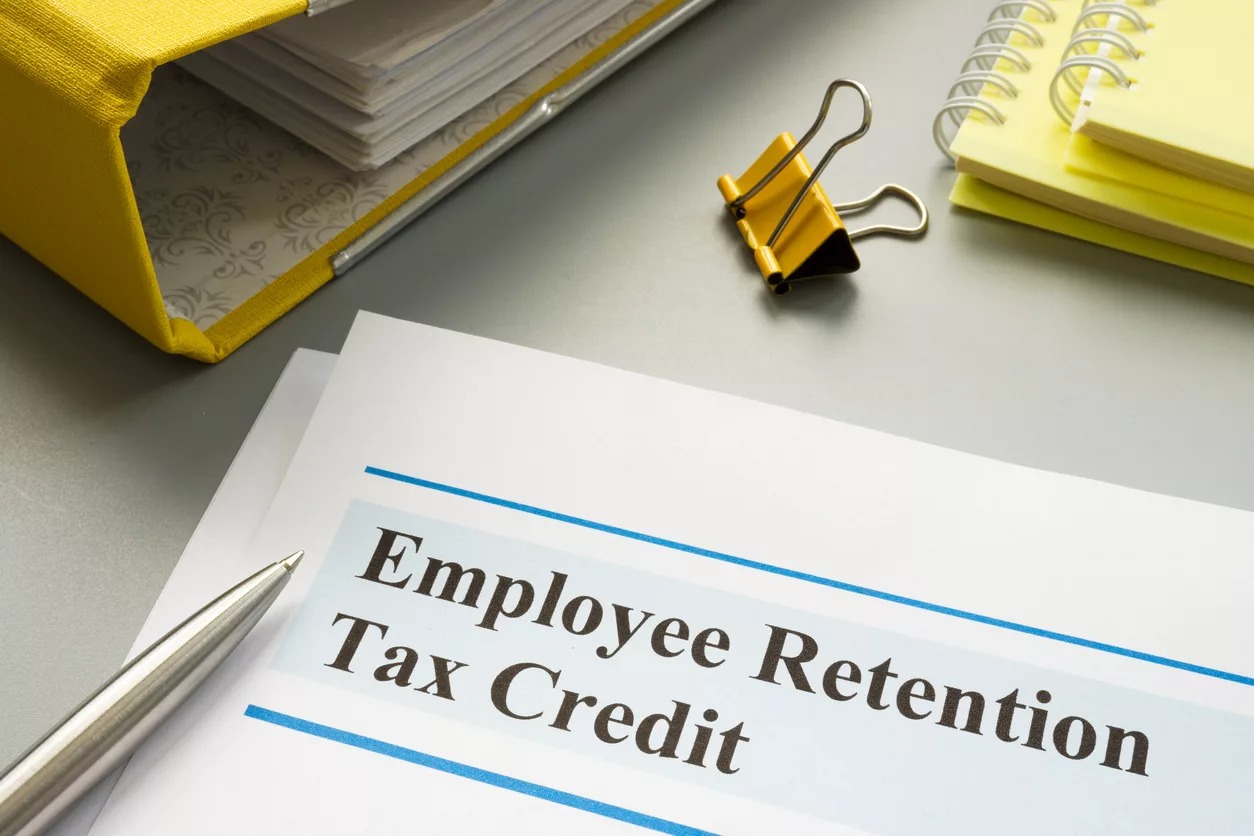Home>Finance>Why Does The IRS Say My Information Doesnt Match 2021


Finance
Why Does The IRS Say My Information Doesnt Match 2021
Published: November 1, 2023
Discover why the IRS claims your information doesn't match in 2021, with a focus on finance. Uncover the reasons behind these discrepancies and find the solutions you need.
(Many of the links in this article redirect to a specific reviewed product. Your purchase of these products through affiliate links helps to generate commission for LiveWell, at no extra cost. Learn more)
Table of Contents
- Introduction
- Understanding IRS Information Matching
- Common Reasons for Information Mismatch
- Outdated or Incorrect Information
- Reporting Discrepancies from Employers or Financial Institutions
- Filing Errors
- Identity Theft and Tax Fraud
- Resolving Information Mismatch Issues
- Contacting the IRS for Assistance
- Conclusion
Introduction
Many taxpayers have experienced the frustration of receiving a notice from the IRS stating that their information doesn’t match. This can be a worrying situation, as it often raises concerns about potential tax penalties or audits. Understanding why the IRS says your information doesn’t match is crucial in order to address the issue and avoid further complications.
The IRS relies on information provided by various sources, such as employers, financial institutions, and other third parties, to ensure accurate reporting and collection of taxes. When these reported amounts don’t align with the information provided on your tax return, it triggers a mismatch. This discrepancy could stem from a variety of reasons, ranging from outdated or incorrect information to simple filing errors or even identity theft.
In this article, we will delve deeper into the common reasons why the IRS says your information doesn’t match and provide insights on how to resolve these issues effectively. By understanding the underlying causes, you can take the necessary steps to rectify the situation and ensure compliance with tax laws.
Understanding IRS Information Matching
IRS information matching is a process that involves comparing the income, payment, and deduction amounts reported on your tax return with the data provided by employers, financial institutions, and other third-party sources. The purpose of this matching system is to ensure the accuracy and integrity of tax reporting and collection.
When you file your tax return, the IRS cross-references the reported amounts with the information they have received from various sources. This includes Form W-2 from your employer, Form 1099 from financial institutions, and other relevant documents. If the reported amounts on your tax return do not match the information provided by these sources, the IRS will issue a notice stating that your information doesn’t match.
It’s important to note that receiving a notice of information mismatch does not necessarily mean you have made an error or engaged in fraudulent activity. It could simply be a result of a reporting discrepancy or outdated information. However, it is crucial to address these notices promptly and take the necessary steps to resolve any discrepancies.
The IRS employs sophisticated systems and algorithms to detect inconsistencies in tax reporting. They have access to vast amounts of data from different sources, enabling them to identify discrepancies with relative ease. This information matching process not only helps the IRS ensure compliance with tax laws, but it also helps minimize tax fraud and evasion.
Understanding how the information matching process works can help you navigate any potential issues and address them in a timely manner. By staying informed about the reasons behind information mismatches, you can take proactive steps to resolve them and avoid any further complications with the IRS.
Common Reasons for Information Mismatch
There are several common reasons why the IRS might flag your tax return with an information mismatch notice. Let’s explore some of the most typical causes:
- Outdated or Incorrect Information: One of the primary reasons for information mismatches is outdated or incorrect data. This can occur when employers or financial institutions provide inaccurate information or fail to update your records. It’s crucial to review the information provided on your tax return against your W-2s, 1099s, and other relevant documents to ensure they are current and accurate.
- Reporting Discrepancies from Employers or Financial Institutions: Information mismatches can also arise from discrepancies between what you report on your tax return and what your employers or financial institutions report. For example, if your employer reported a higher income than what you reported, it will trigger an information mismatch. It’s essential to carefully review the figures provided on your tax forms and reconcile them with your own records.
- Filing Errors: Simple errors made during the filing process can lead to information mismatches. This can include entering incorrect amounts, transposing numbers, or omitting important information. Double-checking your tax return for accuracy and using reputable tax preparation software or seeking professional help can minimize these types of errors.
- Identity Theft and Tax Fraud: Unfortunately, another reason for information mismatch is identity theft or tax fraud. If someone gains unauthorized access to your personal information and files a fraudulent tax return using your identity, it can cause a significant mismatch. Taking precautions to safeguard your personal information and promptly reporting any suspicious activity to the IRS is key to preventing this type of mismatch.
It’s important to note that these are just a few of the common reasons for information mismatches. Each situation is unique, and multiple factors could contribute to the mismatch. If you receive an information mismatch notice from the IRS, it’s crucial to investigate the issue further and take the necessary steps to resolve it.
Outdated or Incorrect Information
An outdated or incorrect information is a common reason for the IRS to flag a tax return with an information mismatch notice. This occurs when the data provided by employers or financial institutions is not up to date or contains inaccuracies. It’s important to address this issue promptly to ensure accurate tax reporting and prevent any potential penalties or audits.
One of the primary causes of outdated information is when employers or financial institutions fail to update your records. For example, if you changed jobs during the tax year and your former employer did not provide the updated income information to the IRS, it can result in a mismatch between the reported income on your tax return and the information available to the IRS.
Similarly, if your financial institution incorrectly reports your interest income or capital gains, it can lead to a mismatch between what you report on your tax return and the information provided by the institution.
To rectify this issue, it’s important to review the information reported by your employers or financial institutions and compare them with your own records. Ensure that all the income, deductions, and payment amounts align with your tax return. If you notice any discrepancies or outdated information, contact the relevant parties to update the records and provide correct information to the IRS.
If your former employer has not provided updated W-2 forms to the IRS, you can request a corrected form from them. It’s important to keep documentation of these requests for your records.
In some cases, incorrect information can also be the result of data entry errors or mistakes made by employers or financial institutions. Double-check your tax forms and verify the accuracy of the reported information. If you find any inaccuracies, contact the respective parties and request corrections or updated forms.
By ensuring that the information provided to the IRS is correct and up to date, you can help prevent information mismatches and minimize the risk of further complications with your tax return. Regularly reviewing your records and staying proactive in updating any changes can go a long way in maintaining accurate tax reporting.
Reporting Discrepancies from Employers or Financial Institutions
Another common reason for information mismatches on your tax return is reporting discrepancies from employers or financial institutions. These discrepancies occur when the amounts reported by these entities do not match what you have reported on your tax return. It is important to understand the potential causes of these discrepancies in order to address them effectively.
One example of reporting discrepancies is when your employer reports a higher income on your W-2 form than what you have reported on your tax return. This can happen due to various reasons, such as additional income that was omitted or miscalculated deductions. It is crucial to review your W-2 form carefully and compare it with your own records to ensure accuracy.
Financial institutions, such as banks or investment firms, also provide information to the IRS about your earnings and transactions throughout the year. Reporting discrepancies can occur if there are discrepancies between what you report on your tax return and what your financial institution reports on forms like the 1099. For example, if you received interest income from a savings account but forgot to include it on your tax return, it will result in a reporting discrepancy.
To address reporting discrepancies, start by reviewing the information provided by your employers and financial institutions. Ensure that the reported income, deductions, and payment amounts align with what you have reported on your tax return. If you find any discrepancies, contact the relevant entities to clarify the issue and request the necessary corrections.
Keep in mind that employers and financial institutions may sometimes make mistakes when reporting information to the IRS. It is a good practice to maintain copies of your own records, such as pay stubs, bank statements, and investment statements, to verify the accuracy of the reported information.
In some cases, the discrepancies could be the result of a delay in reporting. For example, your financial institution may have reported a transaction or income in a different tax year than the one you reported it in. If you believe this to be the case, gather the necessary documentation to support your claim and contact the institution to request a correction.
Resolving reporting discrepancies may require communication and coordination with your employers and financial institutions. Be proactive in addressing these issues early on to prevent any further complications with your tax return.
Filing Errors
Filing errors are a common reason for information mismatches on your tax return. These errors can occur due to various factors, such as data entry mistakes, transposing numbers, or omitting important information. It’s essential to be vigilant and take steps to minimize these errors to ensure accurate tax reporting.
One of the most common filing errors is entering incorrect amounts on your tax return. For example, mistakenly typing a wrong number or miscalculating deductions can result in a mismatch between what you report and what the IRS expects. It’s crucial to review your tax forms thoroughly before submitting them to ensure the accuracy of the information provided.
Transposing numbers is also a common source of filing errors. This occurs when digits are accidentally switched, leading to inaccurate reporting. For instance, entering $1,200 as $2,100 can significantly impact your tax liabilities. Double-checking your tax forms, especially when inputting numbers and figures, can help catch these errors.
Another filing error is omitting important information from your tax return. This can include forgetting to report income from additional sources, neglecting to include deductions or credits that you are eligible for, or failing to report other relevant financial information. It’s essential to review all the sections of your tax return thoroughly and ensure that you have provided all the necessary information.
To minimize filing errors, consider using reputable tax preparation software or seeking professional assistance. These resources can help guide you through the process and reduce the chances of making mistakes. Additionally, take the time to review the tax forms and worksheets provided by the IRS to gain a better understanding of the information required.
If you discover an error on your tax return after filing, it’s important to take immediate action. Depending on the nature and severity of the error, you may need to amend your tax return or submit other relevant forms to correct the mistake. The IRS provides guidelines and instructions for amending tax returns, and seeking professional advice can also be beneficial.
Regularly double-checking your tax forms and maintaining accurate records of your income, deductions, and other relevant financial information can go a long way in avoiding filing errors. By being diligent and proactive in ensuring the accuracy of your tax return, you can minimize the chances of receiving an information mismatch notice from the IRS.
Identity Theft and Tax Fraud
Identity theft and tax fraud are serious issues that can result in information mismatches on your tax return. Unfortunately, these illegal activities can have significant consequences for individuals, including potential financial loss and damage to their personal and financial reputation. Understanding how identity theft and tax fraud can lead to information mismatches is crucial for protecting yourself and resolving any issues that may arise.
Identity theft occurs when someone obtains unauthorized access to your personal information, such as your Social Security number or bank account details, with the intention of committing fraudulent activities. One common form of tax fraud involves the fraudulent filing of a tax return using another person’s identity. In these instances, the fraudulent tax return may include false information, such as inflated deductions or fabricated income, resulting in an information mismatch when compared to the legitimate taxpayer’s records.
If you suspect that you have been a victim of identity theft or tax fraud, it’s important to take immediate action. Start by contacting the IRS and filing a report detailing the incident. The IRS has specialized units to handle identity theft cases and can guide you through the necessary steps to resolve the issue.
Additionally, it’s crucial to take preventive measures to safeguard your personal information. Protect your Social Security number and other sensitive data by keeping it confidential and only sharing it when necessary. Be cautious of phishing scams, where individuals attempt to trick you into revealing personal information through fraudulent emails or phone calls.
Regularly monitor your financial accounts and credit reports for any suspicious activity. This can help you detect any signs of identity theft or tax fraud early on and take immediate action to mitigate the damage.
If you receive an information mismatch notice from the IRS and suspect that it may be due to identity theft or tax fraud, it’s important to respond promptly. Follow the instructions provided in the notice and provide any supporting documentation, such as a police report or affidavit of identity theft, to prove your case.
Resolving issues related to identity theft and tax fraud can be complex and time-consuming. Seeking assistance from a tax professional or a reputable identity theft resource can provide you with the guidance and support needed to navigate through the process successfully.
By staying vigilant, protecting your personal information, and taking immediate action in case of suspected identity theft or tax fraud, you can minimize the chances of experiencing information mismatches and mitigate the potential impact on your financial well-being.
Resolving Information Mismatch Issues
Receiving an information mismatch notice from the IRS can be concerning, but it’s important to remember that it’s a solvable issue. Resolving information mismatch issues requires proactive steps and open communication with the IRS. Let’s explore some key strategies for addressing and resolving these issues effectively.
1. Review the Notice: Carefully read the information mismatch notice from the IRS. Understand the specific areas of discrepancy and the tax forms or documents involved. This will help you identify the potential causes and take appropriate action.
2. Verify your Records: Compare the information on your tax return with the documents you have, such as W-2 forms, 1099 statements, and other relevant records. Check for any errors, omissions, or outdated information that could have contributed to the mismatch.
3. Document Discrepancies: Keep detailed records of any discrepancies you find. Collect copies of tax forms, pay stubs, bank statements, and any other supporting documents that can serve as evidence to support your case.
4. Correct Mistakes: If you identify mistakes on your tax return, such as incorrect amounts or missing information, file an amended tax return using Form 1040X. Include detailed explanations of the changes made and attach any necessary supporting documentation.
5. Contact Relevant Parties: Reach out to employers, financial institutions, or other third parties involved in reporting the information that doesn’t match. Request corrected forms or updated information, if necessary. Keep records of your communication and any response received.
6. Respond to the IRS: Follow the instructions provided in the information mismatch notice. Typically, you will need to respond within a specific timeframe and provide the requested information or documentation to resolve the discrepancy. Failure to respond may result in further IRS actions, such as an audit or penalty assessments.
7. Seek Professional Help: If you find the process overwhelming or need further guidance, consider seeking assistance from a tax professional, such as a Certified Public Accountant (CPA) or an Enrolled Agent (EA). These professionals are experienced in dealing with IRS-related matters and can provide expert advice on how to resolve information mismatches effectively.
Remember, timely action is crucial in resolving information mismatch issues. Ignoring the notice or failing to address the discrepancies can lead to more severe consequences. Be proactive, gather the necessary information and documentation, and communicate openly with the IRS. By taking these steps, you can work towards resolving the issue and ensuring accurate tax reporting.
Contacting the IRS for Assistance
When facing an information mismatch issue with the IRS, it’s essential to know how to reach out for assistance. The IRS provides various channels for taxpayers to seek guidance and resolve their concerns. Here are some ways to contact the IRS for assistance:
1. Phone: The IRS has a toll-free phone line available for taxpayers to ask questions and seek guidance. The phone number can be found on the official IRS website.
2. IRS Website: The official IRS website is a valuable resource for obtaining information and finding answers to common tax-related questions. The website provides a wide range of tools, publications, and FAQs to help taxpayers navigate their concerns.
3. Mail: If you prefer written communication, you can send a letter to the IRS to explain your situation and request assistance. Be sure to include relevant documentation and contact information for a prompt response.
4. In-Person Assistance: The IRS offers in-person assistance at local taxpayer assistance centers. These centers provide face-to-face support, guidance, and assistance in resolving tax-related issues. Check the IRS website for the nearest taxpayer assistance center in your area.
5. Online Tools: The IRS provides a range of online tools and services to help taxpayers resolve various tax-related concerns. These include online tax account access, forms and publications, and the ability to check the status of refunds and payments.
When contacting the IRS for assistance, be prepared to provide necessary information to authenticate your identity and discuss the specific issue at hand. This may include your Social Security number, date of birth, and details about the information mismatch notice you received.
It’s important to note that contacting the IRS can sometimes involve long wait times, particularly during peak tax seasons. It’s recommended to plan ahead and allocate ample time for the call or visit to ensure you can address your concerns without feeling rushed.
If you are experiencing significant challenges in resolving your information mismatch issue or are uncertain about the appropriate steps to take, consider seeking assistance from a tax professional. They can help interpret the IRS notices, communicate on your behalf, and provide expert guidance to ensure your concerns are properly addressed.
Overall, reaching out to the IRS for assistance is crucial in resolving information mismatch issues. Utilize the available channels, familiarize yourself with the IRS website and its resources, and be patient throughout the process to achieve a satisfactory resolution.
Conclusion
Dealing with information mismatch notices from the IRS can be overwhelming, but it’s important to approach the situation with knowledge and a proactive mindset. Understanding the common reasons behind information mismatches is crucial in taking the necessary steps to resolve any discrepancies. Outdated or incorrect information, reporting discrepancies from employers or financial institutions, filing errors, and even identity theft and tax fraud can contribute to this issue.
To effectively address information mismatch issues, it’s essential to review the notice, verify your records, and document any discrepancies. Correct any mistakes on your tax return and contact relevant parties, such as employers or financial institutions, to request necessary corrections. Respond promptly and follow the instructions provided by the IRS to resolve the issue.
If you find the process overwhelming or need additional guidance, seek assistance from a tax professional who can provide expert advice tailored to your specific situation. They can help navigate the complexities of the IRS system and ensure accurate tax reporting.
Remember that the IRS offers various resources and channels for assistance, including phone support, the official website, mail correspondence, in-person assistance centers, and online tools and services. Choose the most appropriate method based on your needs and preferences.
Resolving information mismatch issues may take time and effort, but by staying proactive, seeking help when needed, and maintaining accurate records, you can effectively address the discrepancies and ensure compliance with tax laws.
It’s crucial to address information mismatch notices from the IRS promptly to prevent further complications, such as penalties or audits. By taking the necessary actions and maintaining open communication, you can resolve the issue and achieve peace of mind in your tax reporting process.














